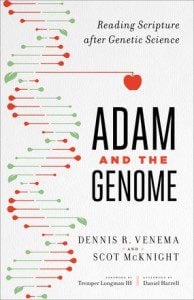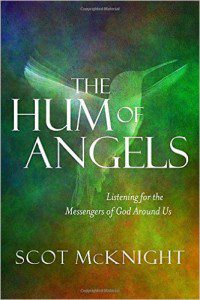Fantastic idea by Boz Tchividjian:
GRACE recently convened a team of Christian theologians, pastors, counselors, educators, and child protection professionals who have each demonstrated a commitment to protecting children and serving survivors. This historic committee has embraced the task of developing the first substantive seminary curriculum designed to educate and train Christian leaders on effective prevention and ministry responses to child sexual abuse. Our objective is to develop this curriculum in such a way that it can be easily adapted into virtually any seminary curriculum. Here is just a sampling of topics that this curriculum must cover if we are going to equip the next generation to help transform our churches into safe communities for children and survivors … more at link.
The text and the eccle-system by Randy Saultz:
The text is not tame and calls us to either choose a new world or defend the old one. Reading the text is a daring, dangerous act. The text calls us out and places us in a larger system than first imagined and explores our relationships with the Creator, creation, outsiders, enemies, neighbors, and with one another. Ecclesia may mean “called out” but it does not eliminate our connection with the world at large. The text reminds us that we do not dominate what is around us. Instead we are participants in it. We are part of an eccle-system.
Here’s an awesome Cleveland Clinic infographic about sleep.
Very big congratulations to this guy!
While you were slouching back to work Tuesday morning, maybe a little hung over or sunburned or sluggish after one too many cheeseburgers during the long holiday weekend, Jon Sutherland was out in suburban Los Angeles, quite literally reaching a milestone beyond the dreams of the rest of us mortals.
Sutherland’s little three-miler marked his 16,438th consecutive day of running at least one mile, a new U.S. record. Yes that’s 45 years and two days, or 190,715 miles of putting one foot in front of another, an average of 11.2 miles per day for the 63-year-old music journalist, record producer and metal-head from Sherman Oaks, Calif.
Sutherland has run despite 10 broken bones, two knee surgeries and more late-night metal concerts than he could possibly count. “I would do everything except go to the party,” he told me when I reached him by phone Tuesday afternoon. “Because I like to get up and run.”
The worst setback was a hip injury when, he said, a tendon tore away part of the bone. He didn’t need surgery and kept up his running, partly, he admitted, to preserve the streak. He believes he re-injured himself twice while recuperating over nine months. The small distances he was able to cover were as psychologically painful as the ache in his hip. “I just limped,” he said. “And then you’re hating yourself.”
He arranged to run right before his knee surgeries and then, without consulting his doctor, on the days right after them.
Holiday cooking #1: Make sure your knives are sharp. How can you tell?
To check your knife’s status, look around your kitchen for a round food with a slick surface: a tomato, an onion with the peel attached, or a green apple is a good gauge. You should be able to easily cut into the surface of said food by directing the knife with very little pressure.
The knife should not roll off the slick surface. If you have to use a sawing motion or use the tip of the knife to pierce the flesh, your knife is too dull.
If your knife is truly sharp, it should make slick, clean cuts that allow the tomato to keep the integrity of its shape, as demonstrated in the picture below depicting various ceramic knives and their cutting ability.
The true test that shows if your knife is dull is a surprising one: can it cut paper? Take a regular sheet of white copier paper and hold your knife perpendicular to its edge. If your knife can cleanly slice through that paper with very little effort on your part, it’s still sharp.
If you have to try and force it or use a sawing motion only to leave a ragged cut, you need to introduce your knife to a good waterstone, stat.
Holiday cooking #2: Grilling
Form the “okay” sign, touching the tip of your thumb to the tip of your forefinger. The pad of flesh at the base of your thumb will feel soft and squishy — exactly the same way a rare steak feels when you poke the top with your forefinger. Now move the tip of your thumb to the tip of your middle finger: That’s medium-rare. Thumb to the tip of your ring finger: medium. Thumb to pinkie: well-done.
Some newly minted college graduates struggle to find work. Others accept jobs for which they feel overqualified. Student debt, meanwhile, has topped $1 trillion.
It’s enough to create a wave of questions about whether a college education is still worth it.
A new set of income statistics answers those questions quite clearly: Yes, college is worth it, and it’s not even close. For all the struggles that many young college graduates face, a four-year degree has probably never been more valuable.
The pay gap between college graduates and everyone else reached a record high last year, according to the new data, which is based on an analysis of Labor Department statistics by the Economic Policy Institute in Washington. Americans with four-year college degrees made 98 percent more an hour on average in 2013 than people without a degree. That’s up from 89 percent five years earlier, 85 percent a decade earlier and 64 percent in the early 1980s.
Should the Redskins change their name (Answer? Yes): Mike Holmgren says Yes:
If Mike Holmgren plans to come out of retirement, he probably won’t be working for Daniel Snyder.
Holmgren, who coached the Packers and Seahawks before ending his NFL career serving as the surrogate for former Browns owner Randy Lerner, recently said that Snyder’s team should just go ahead and change their name.
“Absolutely,” Holmgren told Dave “Softy” Mahler of KJR radio, via the Washington Post. “Because of what it signifies and what it means to so many people. I’m not talking football fans; I’m talking about Native Americans and all that. Yeah. Just change the name. Big deal. Change the name.”
Vox’s report concludes today’s teenagers are the best-behaved on record! See the graphics.
History and literature have painted England’s King Richard III as a scoundrel who met a violent death in battle and was unceremoniously buried. Now that researchers have revealed some conclusions from a fast-paced scientific investigation of a skeleton found last year under a parking lot in Leicester, England, that end seems all the more gruesome. The results announced February 4 by a team from the University of Leicester paint a picture that is remarkably consistent with both historical and fictional accounts….
History says Richard III’s final moments were brutal; Shakespeare portrays the king frantically calling for a horse to carry him back into battle after being knocked off his mount, only to be killed by Richmond — better known as Henry VII. Though the bones can’t tell us about his final words, 10 wounds confirm a violent and chaotic end. A gaping wound in the back of his head suggests the death blow was delivered by halberd, a bladed pole weapon favored in the 15th century. A second wound that also would have been fatal on its own penetrated the skull at the base. Carefully examining the skull’s interior revealed a mark opposite to this entry point, suggesting a blade penetrated 10.5 centimeters.
How TV shows shape characters:
Mitchell Hurwitz, the creator of Arrested Development has said in many interviews that he created the Blith siblings based on the paradigm of “matriarch, patriarch, craftsman, and clown.”
“At one point I remember learning that there was this classic archetype of matriarch, patriarch, craftsman, and clown,” Hurwitz explained on a recent episode of Julie Klausner’s podcast How Was Your Week. “I just thought it was the coolest thing, and started seeing it everywhere there were successful quartets.”












